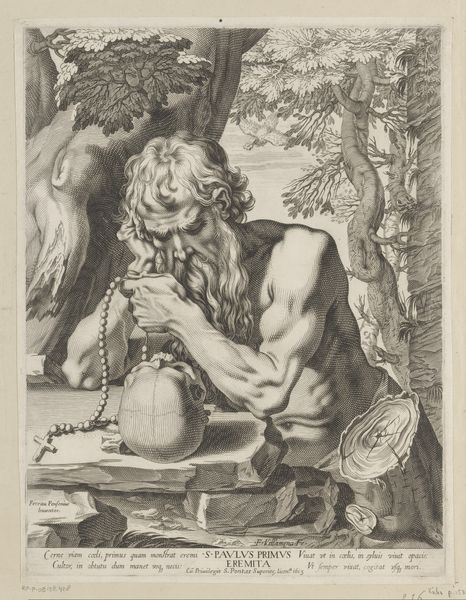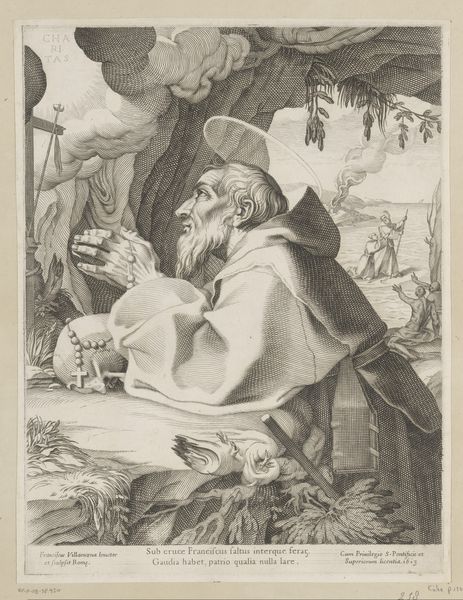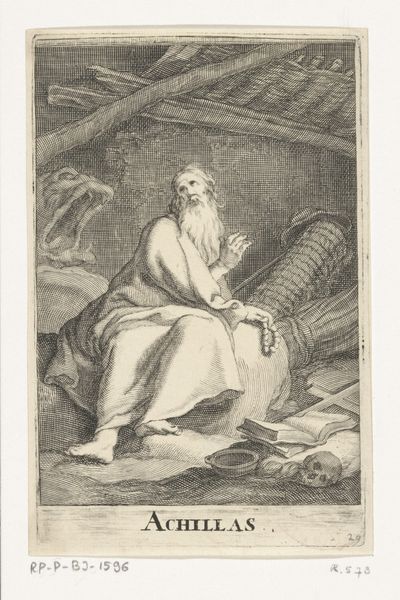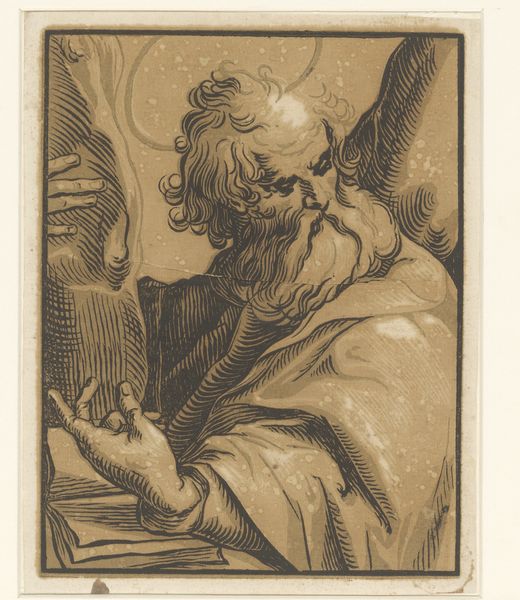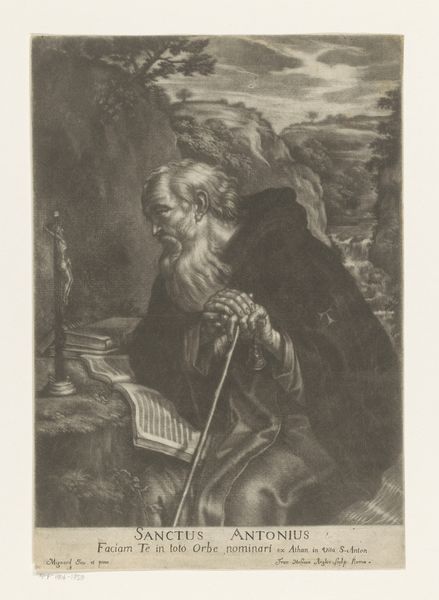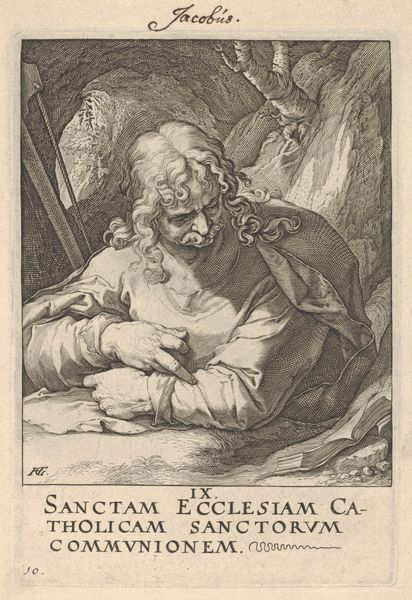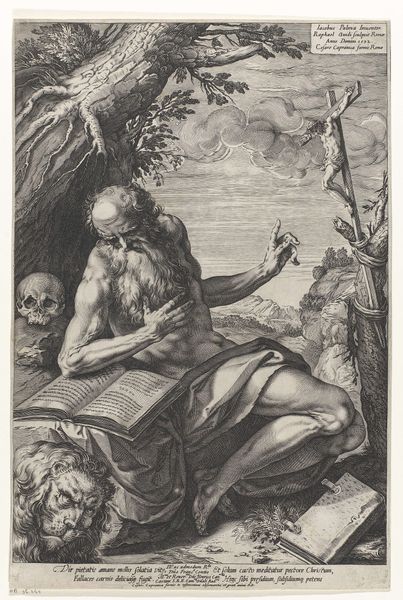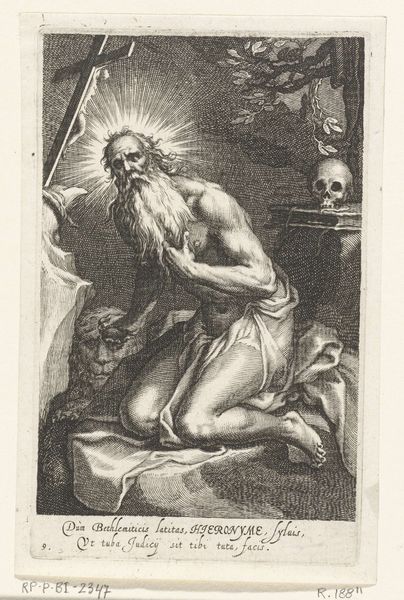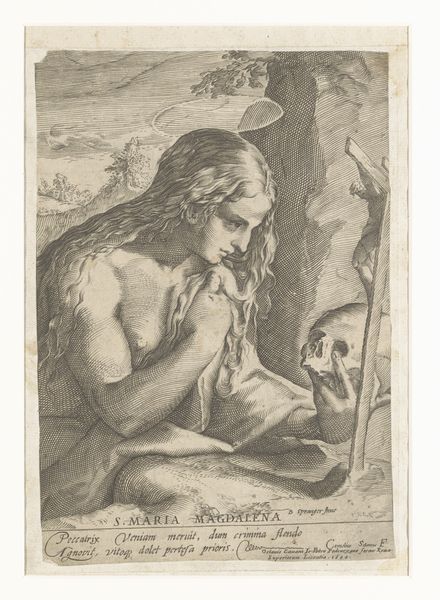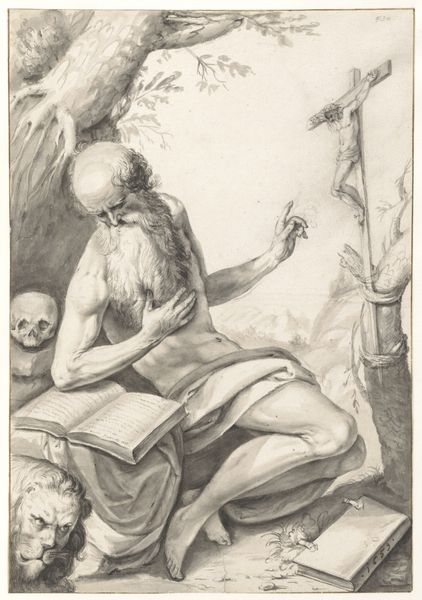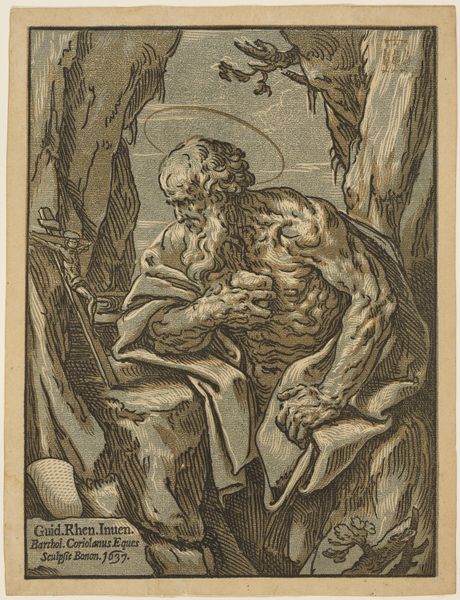
engraving
#
allegory
#
baroque
#
caricature
#
figuration
#
vanitas
#
line
#
history-painting
#
engraving
#
realism
Dimensions: height 312 mm, width 240 mm
Copyright: Rijks Museum: Open Domain
Curator: Here we have "Heilige Hilarion," an engraving created in 1613 by Francesco Villamena. Immediately striking is the melancholic tone – a kind of world-weariness embodied in the saint's pensive pose. Editor: I agree, there’s a palpable stillness. It’s predominantly linear; you can practically feel the etching on the copperplate. The contrast between the dense cross-hatching and the empty space amplifies this sense of solitary contemplation against an unyielding, rough-hewn backdrop. Curator: The work portrays Saint Hilarion, an anchorite, and we can examine it through the lens of early Baroque sensibilities surrounding religious life and hermitage. Consider the vanitas theme—the skull represents mortality, while his gaze and placement in the cave underscore spiritual removal from earthly concerns, reflecting philosophical anxieties of the time. Editor: Absolutely, but it's important to think of the means through which the artist would’ve understood how to manufacture the print. Villamena had to master techniques like hatching and cross-hatching, the right pressures on the plate. Also, prints like these weren't necessarily created as standalone pieces but part of larger series circulated amongst a burgeoning populace hungry for imagery. Curator: And that accessibility speaks to the print’s function within its era. Beyond the purely spiritual, it acted as a touchpoint for larger societal dialogues regarding faith, asceticism, and even proto-scientific considerations of the human body given the focus on anatomy and, notably, the hyperrealistic skull. What were the intersections of identity informing how one reads depictions of piety or suffering in this period? Editor: The use of line becomes key. Every stroke contributed not just to shape but to tone. What sort of workshop practices led to the distribution? Who were Villamena's peers and mentors? Exploring such contexts lends weight to a greater history. Curator: Ultimately, this engraving serves as a portal—not just into Saint Hilarion’s world of faith but into a society grappling with its understanding of spirituality, mortality, and its place in the ever-shifting sands of the seventeenth century. Editor: I’ll concur there. Seeing art like this allows us access—to the working method, its social conditions, and our engagement within that exchange across the divide.
Comments
No comments
Be the first to comment and join the conversation on the ultimate creative platform.


